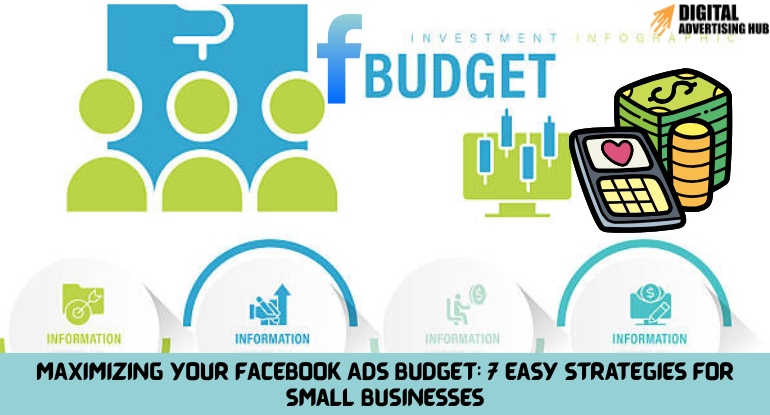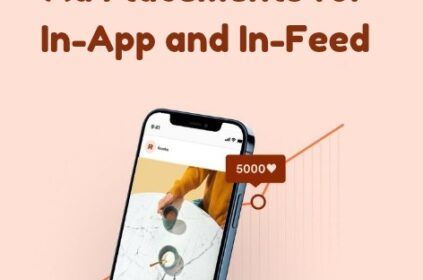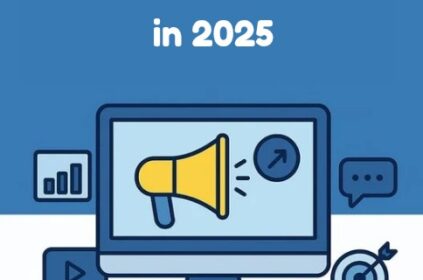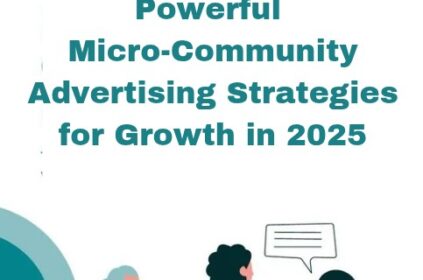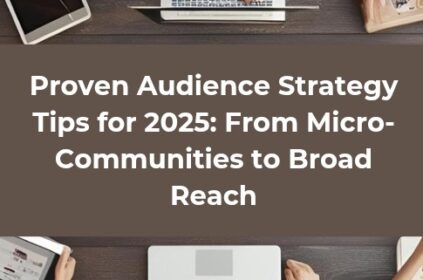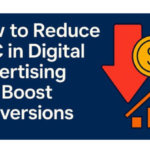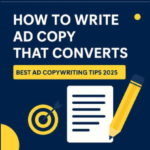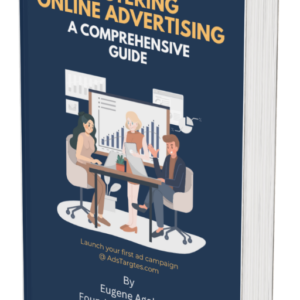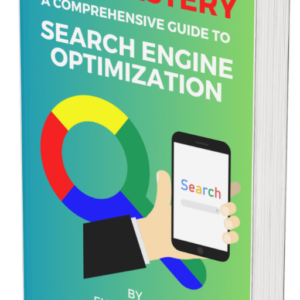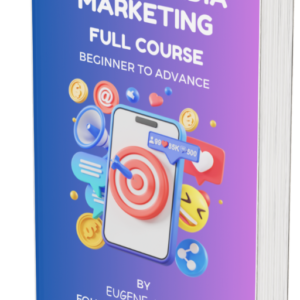As a small business, Facebook Ads can be a powerful tool for driving sales, increasing brand awareness, and boosting customer engagement. But you may ask, “What’s a reasonable Facebook ad budget to start with?” The answer varies depending on your business, but understanding how to create a budget and allocate your spending efficiently is crucial for maximizing return on investment (ROI).
A digital marketing budget is a critical component of an effective digital strategy because it helps you to determine the scope and scale of marketing efforts while ensuring that expenditures align with business goals and maximize return on investment (ROI).
In this comprehensive post, I will walk you through strategies to optimize your Facebook Ads budget and ensure your small business gets the best possible results.
What Is a Facebook Ads Budget?

Think of your Facebook Ads budget as a targeted investment. Unlike traditional marketing, Facebook Ads allow you to pinpoint your ideal audience, ensuring you’re not wasting money on people who aren’t interested in your product. Your budget is the “fuel” for this targeted strategy, powering your campaign to reach potential customers who are most likely to engage with your business.
Choosing the Right Facebook Ads Budget Option
Facebook offers different budgeting options based on your campaign goals and financial flexibility. Here are the most common ones:
#1. Daily Budget: Set a specific daily spend limit. This option ensures continuous ad delivery, making it ideal for campaigns that need to run consistently.
#2. Lifetime Budget: Here, you set a total amount for the entire campaign duration. Facebook automatically optimizes your spending over the campaign’s timeline, which works well for campaigns with fixed budgets or specific timeframes.
Key Factors That Affect Your Facebook Ads Budget
Several factors influence your campaign’s cost, and understanding these can help you better manage your budget:
#1. Targeting: The more specific your audience (age, location, interests), the higher your potential cost per click (CPC) or impression (CPM).
#2. Bidding Strategy: Your bidding choices impact how fast your ads are delivered and how much you spend. Higher bids can speed up delivery but may exhaust your budget quickly.
#3. Competition: If other businesses are targeting the same audience, you may need to bid higher to secure ad placements.
#4. Ad Creatives: Engaging, high-quality ad content can lower your costs, as Facebook rewards ads that generate good interaction (clicks, shares).
When to Increase Your Facebook Ads Budget

Increasing your budget isn’t always necessary, but there are key signs that it’s time:
#1. Your Campaign Is Performing Well: If your conversion rates or click-through rates (CTR) exceed expectations and you’re seeing ROI, consider upping your budget to scale your success.
#2. You’re Consistently Spending Your Budget: If your daily or lifetime budget is often exhausted, increasing it could help maintain momentum.
#3. You’ve Identified Optimization Opportunities: More budget means more opportunities for testing and tweaking. If you find areas for improvement (like expanding targeting or refining creatives), raising your budget allows you to experiment.
While starting with a $5 to $10 daily budget is a great approach if you’re new to Facebook Ads, remember that as you gain experience and see what works, you can increase your budget incrementally to reach a larger audience and optimize for better results.
How Can Facebook Ads Help Your Small Business?
As a small business owner, you wear many hats, and marketing often gets pushed aside. However, Facebook Ads can become a powerful tool to help you achieve key business objectives and accelerate growth. Here’s why Facebook Ads should be an integral part of your strategy:
#1. Connect with Your Ideal Customers
Facebook Ads eliminate the need for broad, ineffective marketing efforts. With Facebook’s detailed targeting options, you can reach the individuals most likely to be interested in your products or services, based on demographics, interests, and behaviors.
#2. Boost Brand Recognition
In today’s competitive landscape, standing out is crucial. Facebook Ads allow you to reach a larger audience, even those who aren’t actively seeking your product, and increase awareness of your brand.
#3. Drive Website Traffic
Facebook Ads can effectively drive traffic to your website, showcasing your products to potential customers and turning them into paying clients.
#4. Generate Leads and Sales
In addition to increasing brand recognition, Facebook Ads can generate qualified leads by capturing contact details from prospective customers, which can then be nurtured into conversions and sales.
#5. Promote Special Offers and Events
Got a flash sale, event, or product launch coming up? Facebook Ads are perfect for creating buzz and ensuring your audience doesn’t miss out on your special offers.
#6. Build Community and Relationships
The goal of social media is connection. Facebook Ads can foster relationships with your audience through interactive campaigns, encouraging comments, likes, and shares, which strengthen brand loyalty and increase customer retention.
#7. Measure Results with Precision
Facebook Ads offer detailed analytics that allow you to track your campaign’s effectiveness in real-time. This helps you adjust strategies, optimize performance, and maximize ROI.
Planning a Budget-Friendly Facebook Ad Campaign

Now that you understand how Facebook Ads can help your business grow, let’s explore how to run an effective campaign without breaking the bank.
#1. Set SMART Goals
Before diving into ad creation, make sure your objectives are clear and measurable. SMART goals are Specific, Measurable, Achievable, Relevant, and Time-bound, ensuring your campaign stays on track.
- Specific: What do you want to achieve? More foot traffic, website visits, or course sign-ups?
- Measurable: Track progress with metrics like website clicks or conversions.
- Achievable: Set realistic goals, especially when you’re just starting.
- Relevant: Align your goals with your business strategy—brand awareness might be more important than immediate purchases, for example.
- Time-bound: Define a timeline for your campaign to allocate your budget efficiently and review results.
#2. Understand Facebook Ads Costs
Facebook Ads work on an auction model where advertisers bid for ad space. Understanding the bidding options helps you control costs effectively.
- Cost-Per-Click (CPC): If driving website traffic is your goal, CPC lets you pay only when someone clicks on your ad.
- Cost-Per-Thousand Impressions (CPM): If increasing brand awareness is your focus, CPM allows you to pay for ad views, even if users don’t click immediately.
Selecting the Right Bidding Strategy
- Lead Generation or Traffic: Opt for CPC bidding if you’re targeting specific actions like clicks or conversions.
- Brand Awareness: Use CPM bidding to maximize reach and get your ad seen by more people.
#3. Create Your Budget
You have full control over your Facebook Ads budget. You can set a daily budget or a lifetime budget for your campaign, depending on your goals and timeline. Starting small, even with a modest budget, can yield significant results when combined with precise targeting.
#4. Prioritize Targeting
Targeting the right audience is key to a successful ad campaign. Facebook’s advanced targeting features allow you to focus on the demographics that matter most to your business. For example, if you run a bakery specializing in gluten-free products, focus on targeting people with specific dietary needs, rather than a general audience.
Even with a small budget, smart targeting can maximize your ad spend and drive high-quality traffic to your business.
By following these strategies, small businesses can effectively run Facebook Ads campaigns that generate results, even on a limited budget. Whether you’re aiming to increase traffic, build brand recognition, or generate leads, Facebook Ads offer a flexible, data-driven approach to achieving your marketing goals.
How to Create High-Impact Facebook Ads on a Budget Without Breaking the Bank
As a small business owner, you know how important it is to make every marketing dollar count. Facebook Ads provide an incredible opportunity to reach your target audience, increase brand awareness, and drive sales. But what if you’re working with a limited budget?
Good news: You can still create powerful Facebook ads that deliver big results without needing a Hollywood budget or an expensive design team. With the right approach, even small-budget campaigns can achieve impressive results. Let us consider some budget-friendly strategies that can help you create high-impact ads and maximize your return on investment (ROI).
Your ad’s copy is the persuasive force that drives action. To get the most out of your budget, here are some tips for writing copy that converts:
i. Be Clear and Concise: Online audiences are bombarded with information every second. Capture attention quickly with clear, simple messaging. Focus on one strong statement that grabs their interest right away.
ii. Highlight the Benefits: Don’t just describe your product or service—show how it solves a problem or improves your audience’s life. Whether it’s helping them reach a goal or make their lives easier, make sure your copy emphasizes what’s in it for them.
iii. Use Strong Calls to Action (CTA): Tell your audience exactly what you want them to do. Whether it’s signing up for a free trial, visiting your website, or learning more about your product, a clear CTA guides them on the next step.
#2. Visual Appeal: Grab Attention Without Breaking the Bank
You don’t need professional photographers to create visually appealing ads. Here are some budget-friendly options:
i. Free Stock Photos: There are plenty of websites offering high-quality, royalty-free stock photos. These can be an excellent resource when creating your ads. Just make sure the images complement your message and are visually appealing to your target audience.
ii. DIY Design with Canva:
If you’re looking to create customized visuals, Canva is a free, user-friendly design tool that makes it easy to craft eye-catching images and videos—even if you have no design experience.
iii. Leverage User-Generated Content (UGC):
Nothing resonates more with potential customers than seeing real people using your product. Whether it’s testimonials, reviews, or social media posts, using user-generated content can boost credibility and encourage trust among your audience.
#3. A/B Testing: Fine-Tune Your Ads for Better Results
One of the biggest advantages of Facebook Ads is the ability to test different versions of your ads. A/B testing helps you compare variations and see which elements perform best.
i. How A/B Testing Works: Create multiple versions of your ad with slight variations—whether it’s different images, copy, or CTAs. Facebook will show these variations to different segments of your audience, tracking which ones get the most clicks, conversions, or engagement.
By continually testing and refining your ads, you can optimize your campaigns for better performance, ensuring that each ad dollar is well spent.
Maximizing ROI with Budget-Smart Strategies
To make the most of your limited ad budget, it’s essential to use Facebook’s tools to your advantage. Here are some key strategies for maximizing ROI:
#1. Use Facebook Pixel for Conversion Tracking
The Facebook Pixel is a small piece of code you add to your website to track the actions users take after clicking on your ad. From purchasing a product to signing up for your newsletter, the Pixel helps you track conversions, so you can make informed decisions about your ad strategy.
With Pixel data, you can:
- Refine your ad copy to better speak to people who take specific actions
- Optimize your ads for conversions
- Retarget users who didn’t complete a desired action
#2. Retargeting and Lookalike Audiences: Get More Out of Your Ads
Retargeting:
Are there users who visited your website but didn’t convert? Retargeting allows you to display personalized ads to these people, reminding them of your product and encouraging them to come back and complete their purchase.
Lookalike Audiences:
Facebook can help you reach new people who are similar to your current customers. By using Lookalike Audiences, you can target individuals who share characteristics with your best-performing customers, increasing the chances of higher conversions.
Both strategies help ensure your ads are shown to the most relevant audience, boosting ROI without additional spending.
#3. Boost Engagement and Build a Community
Facebook Ads are not just about immediate sales—they’re also about building relationships and increasing brand awareness. Encourage engagement with your ads by:
- Asking questions or encouraging comments
- Hosting giveaways or contests
- Sharing valuable content or tips
The more people engage with your ads, the more Facebook’s algorithm will favor your content, leading to increased reach at no additional cost. Engaging ads can have a lasting impact on brand loyalty and customer retention.
How to Track Results and Optimize for Continued Success
Facebook’s robust analytics tools are key to continuously improving your campaigns. Here’s how to monitor your performance and make data-driven decisions:
#1. Master Facebook Ads Manager
Facebook Ads Manager is your main hub for creating, managing, and evaluating your campaigns. Key metrics to track include:
- Impressions: How often your ad was shown
- Clicks: How many people clicked on your ad
- Conversions: How many people took the desired action after clicking on your ad
- Cost per Thousand Impressions (CPM) and Cost per Click (CPC): These metrics help you assess how cost-effective your campaign is.
#2. Make Data-Informed Decisions
Don’t get overwhelmed by the data! Focus on the metrics that align with your campaign goals. For example, if your goal is to increase website traffic, prioritize clicks and visits. If you’re aiming for conversions, track your conversion rates to measure the success of your call to action.
Use this data to identify what’s working and what isn’t. Does your audience respond better to certain images or messaging? Are there any areas where your ad copy can be improved? Use the insights to refine your ads for better performance.
#3. Continuously Optimize Your Campaigns
The digital advertising landscape is always changing, so it’s important to regularly test new strategies and optimize your ads. Experiment with different ad formats, creative styles, and targeting options. Keep an eye on industry trends and adjust your campaigns accordingly to stay ahead of the curve.
Conclusion
Facebook Ads offer a tremendous opportunity for small businesses to connect with their target audience and drive significant growth—even on a limited budget. By focusing on smart targeting, compelling creatives, and constant optimization, you can turn your modest ad spend into impressive returns.
Now it’s your turn to launch your Facebook Ads campaign. By implementing these budget-smart strategies, you’ll be on your way to growing your small business and turning a tight budget into big results.

